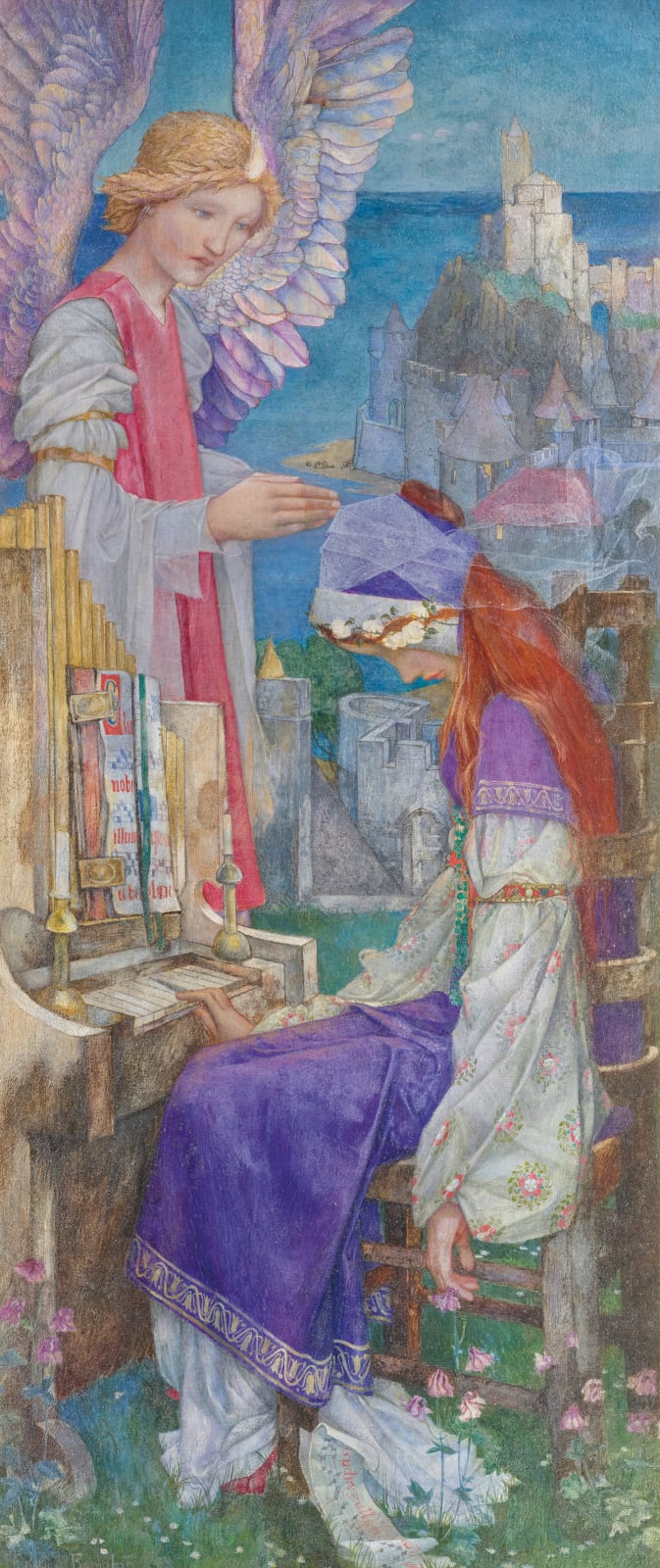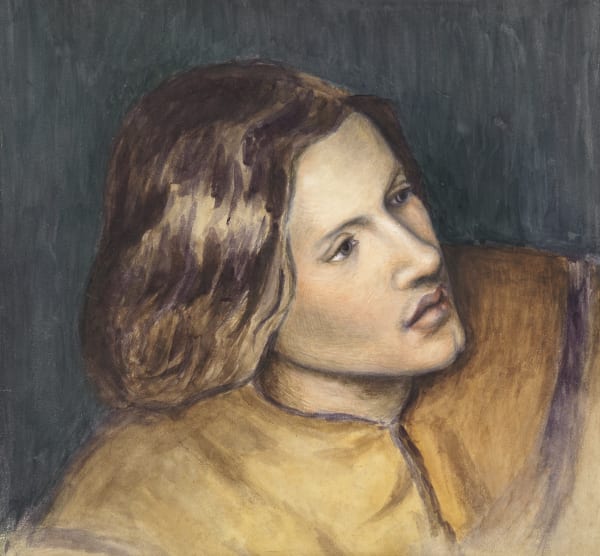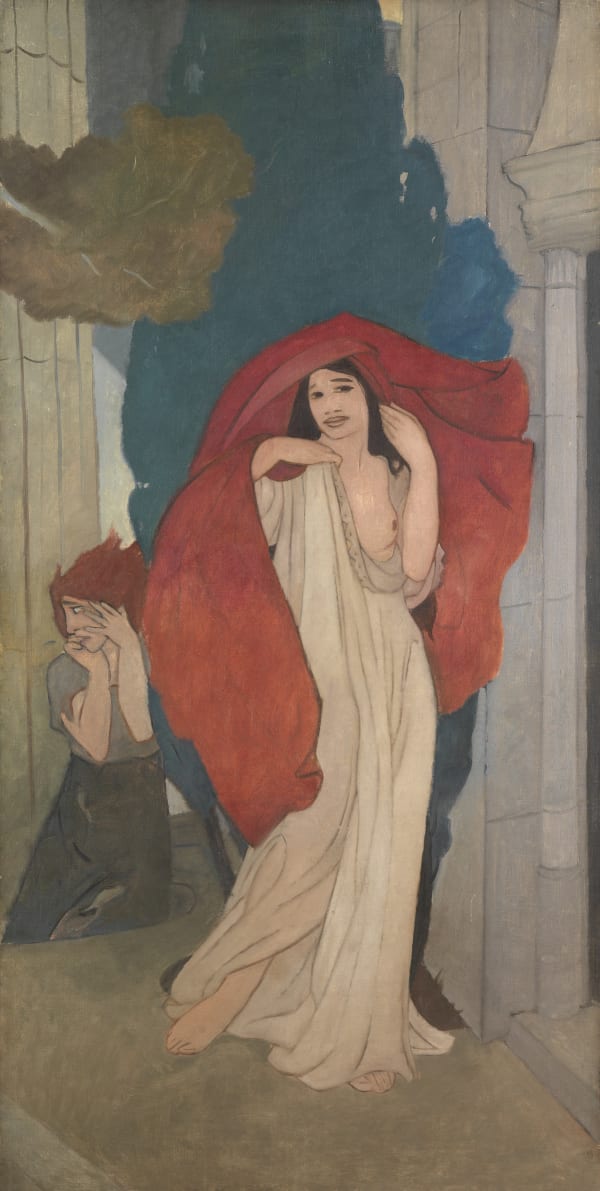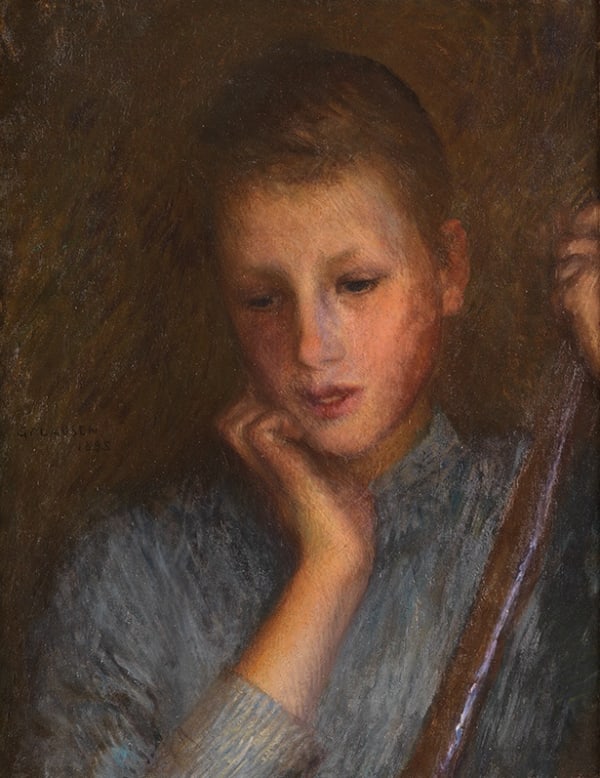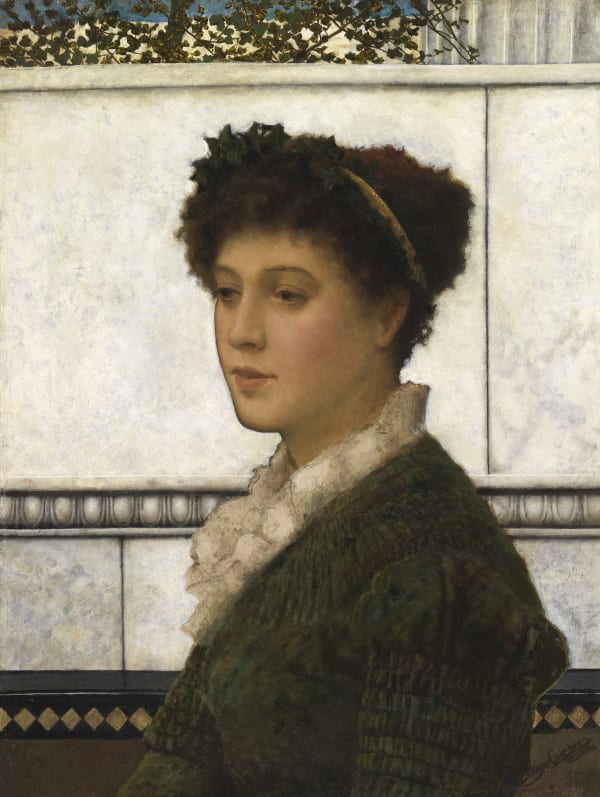Edward Reginald Frampton (1872-1923)
Provenance
Private collection, UKExhibitions
Surrey Art Society (in the Continental Gallery, Bond Street W1), 1901, no 59;
Society of Oil Painters, 1902, no 115
Literature
Aylmer Vallance, The Paintings of Reginald Frampton, ROI, The Studio, no. 75, Dec. 1918, p. 67;
Rudolph Dircks, quoted in the catalogue to the Memorial Exhibition of Paintings and Water-Colours by the Late E. Reginald Frampton, Fine Art Society, 1924, pp. 3-4.
This wonderfully luminous painting seems to glow like a stained glass window. Frampton’s father had designed stained glass, and it had been his son’s early training. The subject is from Tennyson’s poem The Palace of Art, first published in 1832 (the 1857 Moxon edition was illustrated by Rossetti), about a man’s soul that inhabits a secluded Palace of Art built, by man, remote from the world:
‘I built my soul a lordly pleasure-house,
Wherein at ease for aye to dwell’
Having first revelled in the Palace, the soul begins to despair: ‘“No voice,” she shriek’d in that lone hall,
“No voice breaks thro’ the stillness of this world”’
But it is not too late and the soul leaves the Palace to live in a modest cottage in the world of men, and by mixing with others, revives.
Our painting depicts St Cecilia, the patron saint of music, mouldering in eternal sleep in the Palace of Art (these lines were used as the title when it was exhibited):
‘Or in a clear-wall’d city on the sea,
Near gilded organ-pipes, her hair with white roses, slept Saint Cecily;
An angel look’d at her.’
Frampton had seen Burne-Jones’s work at the age of 26 in the New Gallery in London in 1898-9 and it had struck him ‘with the force of a very revelation, opening his eyes to the supreme possibilities of the human form in decoration’ (Vallance). The legend of the Briar Rose, which possessed Burne-Jones for over 30 years, with many versions painted, offered a dreamscape, a vision of an enchanted world of deathless sleep, with the prospect of ultimate awakening from a lover’s kiss. Similarly, Frampton became obsessed with Tennyson’s vision of a Palace of Art, and painted St Cecilia in and before the Palace on many occasions for more than 20 years, initially in a version shown at the Royal Academy in 1896, and then in further versions for the Surrey Art Society in 1897. An earlier, darker version, of a singing St Cecilia attended by several angels, is dated 1899, and stands at the end of the early stages of Frampton’s development of the theme. Our brilliantly coloured painting of 1900 represents a leap forward only a year or two on, and yet it retains the energetic rough-hewn improvisatory quality of his early work in oils, before he embraced the more subtle, muted colours of tempera. We can date our picture from a delicate drawing that the dealer Sarah Colegrave had, precisely for the hands of our St Cecilia and for the praying hands of the angel, which is dated 1900. Our picture is therefore the one which he exhibited several times in the early 1900s, first at the Surrey Art Society in 1901 (no 59), and at the Institute of Oil Painters in 1902 (no 115), where it drew notice from the Daily News, which described the ‘delicate and tender figure of St Cecilia by Mr Reginald Frampton. The picture – no 115 – represents her sleeping at the organ. It has no title, but a few lines from Tennyson indicate the subject.’ A later, larger, landscape-shaped version of St Cecilia (painted in 1905, 45 1⁄2 x 49 1⁄2 in, and exhibited at the Institute of Oil Painters in 1906) is delicate and carefully worked. Writing in the Art Journal in 1907 of this version, Rudolf Dircks wrote ‘In St Cecily, have we not a precise and sympathetic interpretation of the lines of Tennyson – in which the full poetic beauty is apprehended pictorially?’ Frampton exhibited further versions of St Cecilia at the RA in 1911 and 1917.
-
 Henry Treffry Dunn (1838-1899)Study for The Duet£8,500
Henry Treffry Dunn (1838-1899)Study for The Duet£8,500 -
 Eric Harald Macbeth Robertson (1887-1941)The Daughters of BeautyPOA
Eric Harald Macbeth Robertson (1887-1941)The Daughters of BeautyPOA -
 Sir George Clausen (1852-1944)PensivePOA
Sir George Clausen (1852-1944)PensivePOA -
 John Atkinson Grimshaw (1836-1893)BrunettaPOA
John Atkinson Grimshaw (1836-1893)BrunettaPOA -
 John William Waterhouse (1849-1917)Anemones
John William Waterhouse (1849-1917)Anemones -
 John Byam Liston Shaw (1872-1919)Mrs Paul Konody
John Byam Liston Shaw (1872-1919)Mrs Paul Konody -
 Edward Reginald Frampton (1872-1923)EchoPOA
Edward Reginald Frampton (1872-1923)EchoPOA -
 Frank Cadogan Cowper (1877-1958)The Queen of Hearts She made some tarts, All on a summer’s dayPOA
Frank Cadogan Cowper (1877-1958)The Queen of Hearts She made some tarts, All on a summer’s dayPOA -
 Sir Edward Coley Burne-Jones (1833-1898)Euphrosyne Cassavetti
Sir Edward Coley Burne-Jones (1833-1898)Euphrosyne Cassavetti -
 Thomas Matthew Rooke (1842-1942)Carvings by The Cathedral Door Auxerre, France
Thomas Matthew Rooke (1842-1942)Carvings by The Cathedral Door Auxerre, France
The Maas Gallery, 6 Duke Street, St. James's, London, SW1Y 6BN
+44 (0) 20 7930 9511 | mail@maasgallery.com
This website uses cookies
This site uses cookies to help make it more useful to you. Please contact us to find out more about our Cookie Policy.
